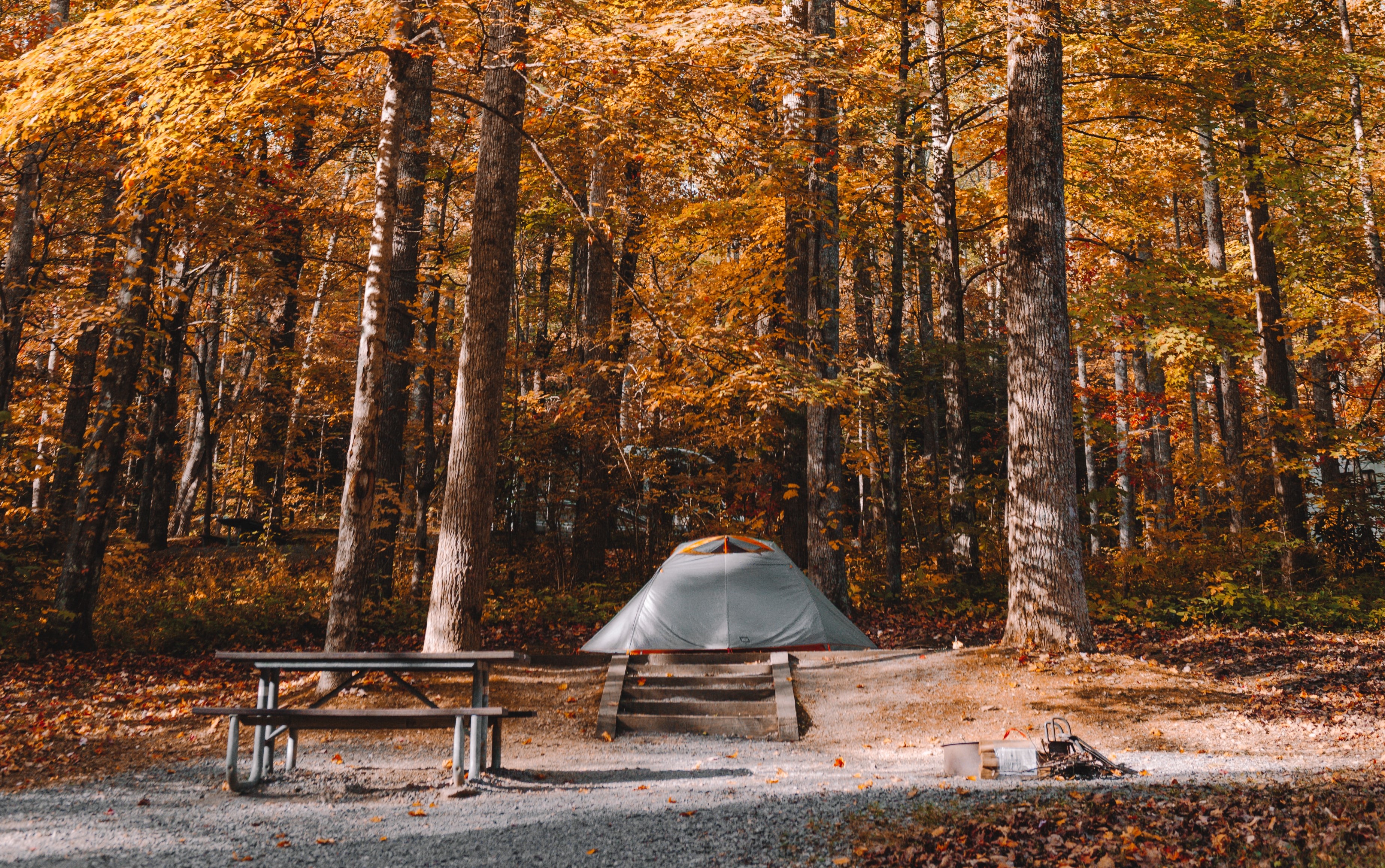Our Guide to Cooler-Weather Camping

Many people consider camping an activity that’s exclusively meant for warmer weather. But depending on where you live, this could mean not having much of an opportunity to camp at all. Although summer camping offers many considerable advantages, the summer is not the only season in which you can enjoy sleeping outdoors – especially if you’re well prepared and well equipped. In this guide, we’ll present a few advantages to cooler-weather camping, together with some general tips and a few equipment recommendations.
Why You'll Love It
Cooler = comfortable
Camping in the summer, depending on where you are, can sometimes be too hot. Ever shared a tent with someone when it’s 30°C outside? Then you’ll know how much of a struggle it can be getting to sleep in these situations. According to the Sleep Council, 16-18°C is the ideal temperature for sleeping, while over 24°C is likely to cause restlessness.
Quieter campsites for sounder sleeps
For various reasons, a lot of people only go camping in the summer – this could be because of school holidays or simply because they believe other seasons will be too cold! Their loss is our gain: in our opinion, a quieter campsite is a more pleasant campsite. The facilities are less busy and it’s often cheaper, allowing you to experience the peace and serenity of nature undisturbed.
See more wildlife
Fewer people camping in campsites and areas of natural beauty means that there’s more chance that you’ll see animals mooching about. But always be respectful and careful – you’re guests in their habitat, not vice versa. Camping in cooler weather also means there will probably be less insects. This will be much appreciated by anyone who’s ever been terrorised by mosquitoes on a muggy summer’s evening – so leave the bug spray at home.
Two wonderful seasons
The autumn is a wonderful time to be outdoors. Revel in the splendour of one of nature’s most beautiful transformations and prepare to be wowed when you emerge from your tent in the morning to an especially stunning sunrise. Your kids will get a huge kick out of the autumn too – they’re sure to kick or jump into every huge pile of leaves they see. Spring weather can also be great: cooler breezes and crisp sunny mornings can be far more enjoyable than blazing hot sunshine, especially if you’re hiking or doing anything strenuous.
The Gear
Sleeping bags
Naturally, camping in cooler weather comes with its own set of equipment requirements. Starting with the obvious, you’ll need to bring a sleeping bag that’s able to keep you warm on cooler nights. We recommend one that has a ‘comfort temperature’ of between 0 and 10°C. These are often named ‘3-season’ sleeping bags, and although they are usually a little warm for the height of summer, if you plan to buy only one sleeping bag, getting one of these is a good idea. You can always take off or put on more clothes if you get a bit hot or cold. Pay close attention to the temperature ratings listed in the product descriptions.
Mammut Nordic OTI 3-Season sleeping bag
Sleeping mattresses
Various types of sleeping mattresses are also available. At the very basic end of the scale you’ll find simple foam mats that are more akin to yoga mats and don’t really offer much in the way of comfort or insulation. Next comes air mattresses: standard inflatable mattresses that pack down very small, but also don’t really offer a lot of insulation. A third category, air mattresses with built-in insulation, are ideal for trips in cooler weather – many of these are also self-inflating.
Therm-a-Rest Voyager insulated air mattress
Tents
You should be ok to use your normal 3-season tent in cooler weather. If you think it’s going to be very wet, cold and windy, there are tents available that use specially-treated heavier fabrics, less netting (for extra warmth) and have reinforced poles. However, these are special features and such tents usually command a considerably higher price.
MSR Mutha Hubba NX tent
Clothing
Bringing a warm down layer on cooler-season camping trips is never a bad idea; even better if it’s waterproof. A pair of full-length tights or leggings can also work wonders for warming you up on cooler nights, and the space penalty in your backpack is nominal. With the right sleeping bag and pad, some emergency layers will go a long way to ensuring you have the right set up for seasons where the conditions can be unpredictable.
Patagonia Micro Puff down jacket
Tips
- Your main goal should be separating yourself from the cold ground, so bringing an extra insulation sheet to put between your body and air mattress could make the difference between a very cold night and a bearable night. You could try a layer of felt for this, or in desperate times even a sheet of folded plastic
- Eating a hearty meal before bed will not only make you feel good but will replenish you and keep you warmer through colder nights. Also make sure to keep yourself well hydrated
- Pick your tent position wisely: a tent set up in the middle of a plain or field will be very exposed to wind and rain, making it feel even colder than it really is. This can prevent you from getting a good night’s sleep. On the other hand, setting up your tent where it will be exposed to the sunrise can help you warm up quicker in the morning
- Make sure to follow the LNT (leave no trace) principal – leave your campsite exactly as you found it, ensuring minimal environmental impact
